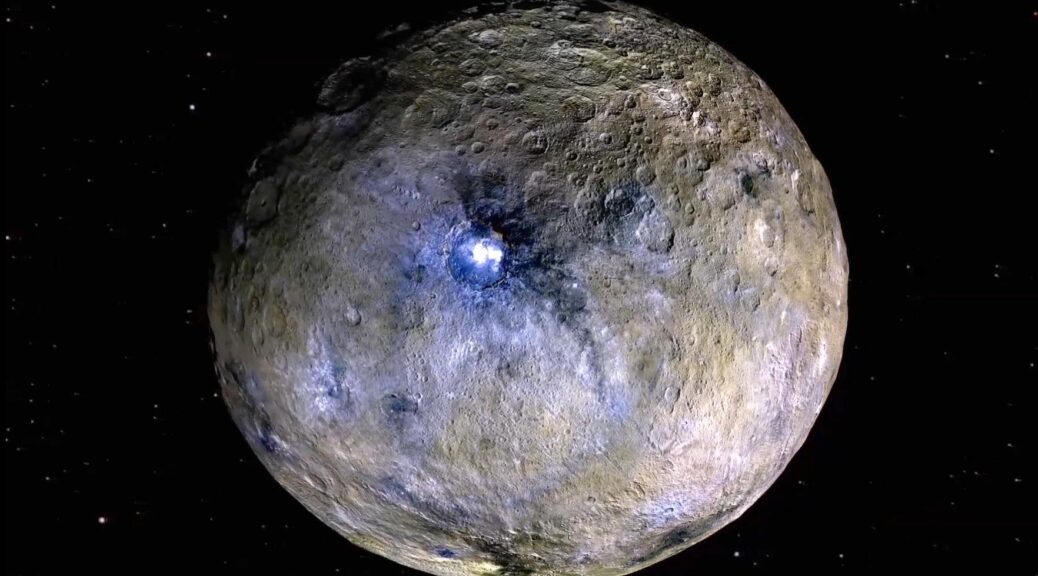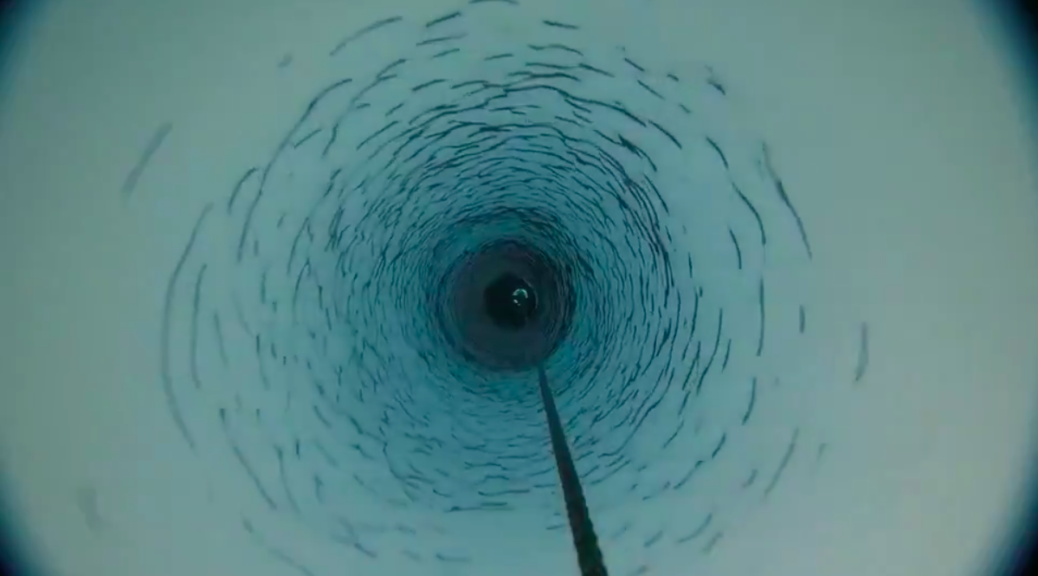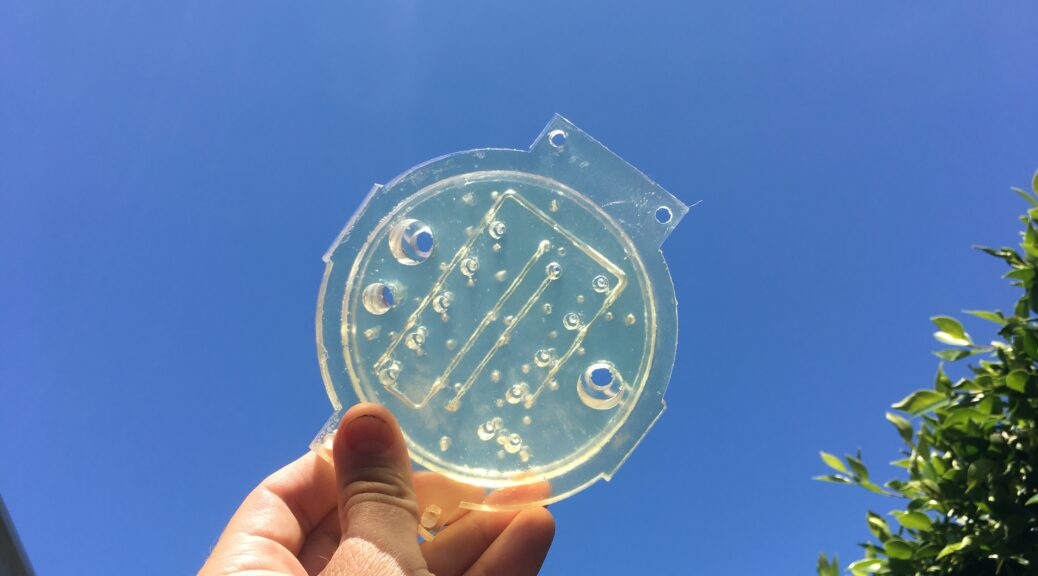Tantalizing evidence shows the dwarf planet bears striking similarities with Earth and Mars
Members of the Planetary Habitability & Technology lab at Georgia Tech are the authors of one of several new and exciting papers about dwarf planet Ceres. The paper is one of seven based on data from NASA’s Dawn mission, and suggests that Ceres has pingo-like formations that share characteristics with those on Earth and Mars.
Pingos are dome-shaped hills, which on Earth form in areas where the ground remains partially frozen year-round. Similar to how a bottle of soda in the freezer will push off its cap and expand up out of the bottle as it freezes, when groundwater freezes, that pressure can push up a layer of the ground to form a dome-shaped hill called a pingo. These pingos can continue to grow for hundreds or thousands of years — as long as water continues to flow to the near-surface, that water will freeze and the pingo will grow.

“For years I’ve been strangely obsessed with Pingos. My advisor in grad school assigned us a paper on them and I’ve been thinking about them ever since. When it came time to propose ideas for Dawn to investigate, both Hanna and I proposed that we should search for pingo-like features on Ceres. There were hints in the early data, but it took the resolution of the XM2 (Second extended mission) phase of the mission to finally have enough resolution to really make a strong case that this kind of feature can form on Ceres,” said Georgia Institute of Technology associate professor Britney Schmidt, one of the paper’s authors.
The paper, published in Nature Geoscience, points to parallels in the pingo-like hills on Ceres and pingos on Earth, making a strong case for there being similar geologic processes causing both. Data the team analyzed from the Dawn mission suggests the Ceres hills are rich in water, with similar size and distribution to Earth’s pingos.
“The combination of morphology (shape), distribution, clustering behavior, association with water-rich materials, and young apparent age, in our analysis, made an extremely compelling case for these features to be ice-cored hills like pingos on Earth,” said Kynan Hughson, one of the paper’s authors and a postdoctoral fellow working with Schmidt. Hughson and Schmidt along with Hanna Sizemore of the Planetary Science Institute were the lead investigators for the study. “We also found that they cluster and organize in ways similar to terrestrial pingos.”


Ceres is the 25th largest body in our solar system. The dwarf planet is also the largest asteroid (roughly as wide as the state of Texas), located in the asteroid belt between the orbits of Mars and Jupiter, even larger than Saturn’s famous moon Enceladus. The Dawn spacecraft circled Ceres from 2015-2018, and was able to collect data from just 35 km above the surface in its final phase before running out of fuel. Its focus in the XM2 mission was Occator crater — a 20-million-year-old impact crater with interesting characteristics.
Occator contains the brightest cluster of spots observed on Ceres, with a bright dome in the center. Early in the mission these bright spots in Occator were speculated to be deposits from brines — water with a high concentration of salts —XM2 confirmed this, and revealed ways that these brines come from below the surface of the dwarf planet.
In their Nature Geoscience publication, Schmidt, Hughson, Georgia Tech undergraduates Kayla Duarte, Vivian Romero and Kathrine Udell, and Dawn mission colleagues wrote about how the hills in Occator crater may have formed from refreezing of subsurface flowing water, produced by melting by the impact that formed the crater. Their work suggests that the effects that happen when groundwater refreezes, dubbed “cryo-hydrologic processes” in the paper, were active on Ceres in the recent geologic past, similar to how pingos form on Earth and potentially even Mars.

“On Earth, seasonal cycles in permafrost affect the growth and survival of pingos. In fact, the warming conditions we’re seeing right now in the Arctic due to climate change have caused pingos to collapse and even explode”, Schmidt said. “There aren’t any cycles like this on Ceres, but we know the floor of Occator was full of liquid water and brines from the impact, which would have frozen at the surface but allowed the subsurface liquid to remain for many, many years. In that case, any differences in pressure or porosity in the ground would allow these cryo-hydrologic processes to mimic how pingos form on Earth.”
Ceres is a C-type asteroid, which are among the oldest and darkest asteroids in our solar system. This type of asteroid rained down on the early Earth, bringing with them water and other important ingredients for life, Schmidt explained. In the series of 7 papers coming out in the Nature family of journals celebrating Dawn’s XM2 mission, Schmidt, Hughson, and other contributors show that these water-rich small bodies like Ceres still exist in the inner solar system. Schmidt is a co-author on the two Nature Communications papers led by Paul Schenk of LPI in Houston and JPL’s Jennifer Scully, on which the undergraduate team lead by Duarte are also co-authors. Hughson and Schmidt are both co-authors on the paper reporting ice deep in Ceres’ crust led by Ryan Park of JPL.
In the future, NASA hopes to use probes to explore the surfaces of icy planets and asteroids like Ceres, Europa, and others, and Schmidt and Hughson both hope for a return to Ceres in the near future.
“Sampling and analyzing the rock and ice on the surface of Ceres, as well as confirming the icy nature of these mounds in the future, will help inform us of Ceres’ past and present habitability. This will also inform us of rock weathering processes that take place within the interiors of icy moons like Europa and Enceladus, and shed light on the origin of Earth’s water,” Hughson said.
Pingos in the Arctic, water on Mars, climate change, and astronauts
In addition to identifying pingo-like formations on Ceres, Schmidt and Hughson are working to understand Earth’s pingos even better, which will improve our understanding and study of similar formations elsewhere in our solar system like Mars and Ceres.
“Like on other planetary bodies, cryo-hydrologic processes are altering the landscape here on Earth as well, dropping an incredible opportunity into our lap. With PingoSTARR, we’re going to head north and survey pingos with our best geophysical tools, so that we can start to put numbers on the formation and collapse processes govern the ‘lifecycle’ of pingos. With any luck, we’ll come back with a better understanding of ground ice processes that govern change on not just the Arctic coastline, but also beneath ice sheets and across other planetary bodies,” said Matthew Siegfried, another of Pingo STARR’s primary investigators.
The Planetary Habitability & Technology team just received a $2 million grant called Pingo STARR: Pingo SubTerranean Aquifer Reconnaissance & Reconstruction from NASA to bring together the best techniques to explore pingos on Earth as a steppingstone for looking for water on Mars and Ceres that could one day be used by astronauts. While they’re at it, they’ll also be helping understand the effects of climate change.
“Full 3D characterization of pingos and their surrounding/underlying hydrology has not been done. Filling in this knowledge gap not only teaches us more about these Arctic oddities and processes that govern them on Earth, but allows us to construct more detailed and testable hypotheses about how pingo analogs might form in the solar system,” Hughson said.

Their team, along with colleagues from the Colorado School of Mines and the Planetary Science Institute, are looking forward to extensive research in the arctic in order to “detect, characterize, understand, and eventually utilize groundwater and ground ice deposits on worlds such as Mars and Ceres,” Hughson said.
Another important reason for studying pingos on Earth is that these hills can be “important recorders of climate history.” Over the next four years, the team will use a combination of geophysical techniques—things like radar and electrical conductivity that can be used to map subsurface water and ice—to explore pingos on the north slope of Alaska and Canada’s pingo-dotted Tuktoyaktuk peninsula where some of the world’s largest and most densely clustered pingos are found. These are some of the best analogs for pingos-like features on other planets, but are also indicators of what’s happening on Earth due to climate change.
“Their size and texture tell us about recent changes in the Arctic,” Hughson said. “By observing and characterizing their ice structure using geophysical methods over several years we will be able to identify rapid changes in ice saturated permafrost.”
“There have been a lot of papers trying to understand whether features on other planets really are pingos, and if so, what that says about the subsurface conditions on these planets. With the Pingo STARR project, we’ll help uncover the plumbing of these features and better understand what they say about how water, ice, and time affect the surfaces of planets, including our own,” Schmidt said.






















